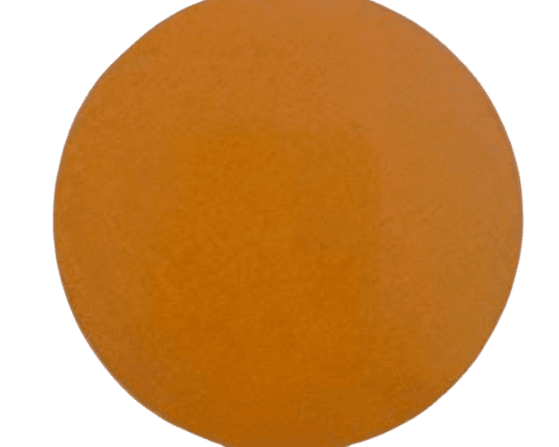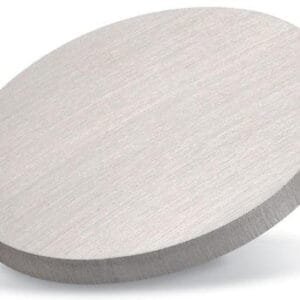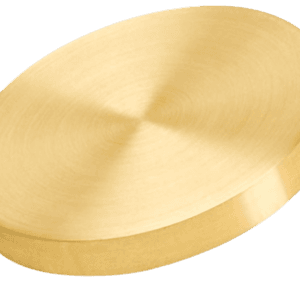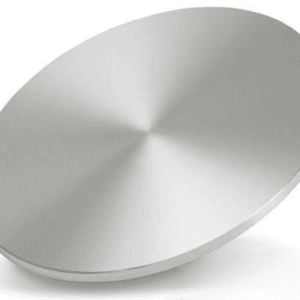Cadmium Sulfide Sputtering Target Description
Cadmium sulfide sputtering target is a ceramic sputtering material composed of cadmium and sulfur, with the chemical formula CdS. This target is widely used in various applications due to its unique properties, including its use in thin film deposition processes. Cadmium sulfide is known for its photoconductive and semiconducting properties, making it suitable for use in photodetectors, solar cells, and other optoelectronic devices.
 Cadmium is a chemical element named after the Latin term for the mineral calamine, ‘cadmia.’ It was first identified in 1817 by scientists S. L. Hermann, F. Stromeyer, and J.C.H. Roloff, who also successfully isolated the element. Represented by the symbol “Cd,” cadmium has an atomic number of 48 and is located in Period 5 and Group 12 of the periodic table, classified under the d-block elements. The element has a relative atomic mass of 112.411(8) Dalton, with the value in brackets indicating the measurement’s uncertainty.
Cadmium is a chemical element named after the Latin term for the mineral calamine, ‘cadmia.’ It was first identified in 1817 by scientists S. L. Hermann, F. Stromeyer, and J.C.H. Roloff, who also successfully isolated the element. Represented by the symbol “Cd,” cadmium has an atomic number of 48 and is located in Period 5 and Group 12 of the periodic table, classified under the d-block elements. The element has a relative atomic mass of 112.411(8) Dalton, with the value in brackets indicating the measurement’s uncertainty.
Related Product: Cadmium Sputtering Target
 Sulfur, also spelled sulphur, is a chemical element with a rich history, originating from the Sanskrit word ‘sulvere’ or the Latin ‘sulfurium,’ both referring to sulfur. This element has been known and utilized since before 2000 BC, with early uses documented by Chinese and Indian civilizations. The chemical symbol for sulfur is “S,” and it holds the atomic number 16 on the periodic table, positioned in Period 3 and Group 16, within the p-block. Sulfur’s relative atomic mass is 32.065(5) Dalton, where the figure in brackets denotes the uncertainty in its measurement.
Sulfur, also spelled sulphur, is a chemical element with a rich history, originating from the Sanskrit word ‘sulvere’ or the Latin ‘sulfurium,’ both referring to sulfur. This element has been known and utilized since before 2000 BC, with early uses documented by Chinese and Indian civilizations. The chemical symbol for sulfur is “S,” and it holds the atomic number 16 on the periodic table, positioned in Period 3 and Group 16, within the p-block. Sulfur’s relative atomic mass is 32.065(5) Dalton, where the figure in brackets denotes the uncertainty in its measurement.
Cadmium Sulfide Sputtering Target Specification
| Compound Formula | CdS |
| Appearance | Yellow-orange Solid |
| Density | 4.82 g/cm3 |
| Melting Point | 1750 °C |
| Type of Bond | Indium, Elastomer |
| Available Sizes | Dia.: 1.0″, 2.0″, 3.0″, 4.0″, 5.0″, 6.0″ Thick: 0.125″, 0.250″ |
Cadmium Sulfide Sputtering Target Application
The cadmium sulfide sputtering target is primarily used in thin film deposition applications across various industries. It is utilized in the creation of decorative coatings, semiconductors, displays, LEDs, and photovoltaic devices. Additionally, this material serves functional coating purposes in the optical information storage industry, as well as in glass coatings for automotive and architectural glass. Its properties also make it valuable in optical communication technologies.
Cadmium Sulfide Sputtering Target Packing
Our cadmium sulfide sputter targets are meticulously tagged and labeled externally to guarantee efficient identification and quality control. We take extensive measures to prevent any potential damage during storage or transportation, ensuring the product arrives in pristine condition.
Get Contact
TFM offers Cadmium Sulfide Sputtering Targets in various forms, purities, sizes, and prices. We specialize in high-purity thin film deposition materials with optimal density and minimal grain sizes, which are ideal for semiconductor, CVD, and PVD applications in display and optics. Contact Us for current pricing on sputtering targets and other deposition materials that are not listed.


 MSDS File
MSDS File



Reviews
There are no reviews yet.